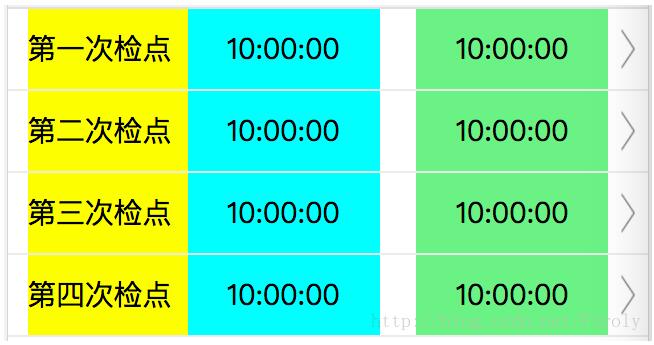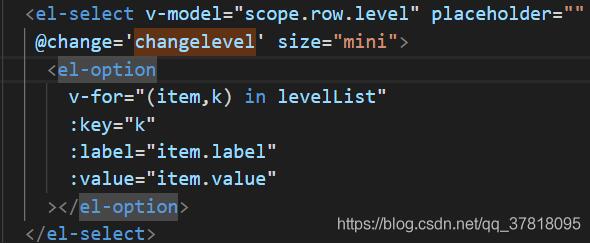仅仅传入自定义参数
HTML
<div id="app"> <button @click="tm(123)">ddddd</button> </div>
JS代码
new Vue({
el:'#app',
methods:{
tm:function(e){
console.log(e);
}
}
})
仅仅传入事件对象
HTML
<div id="app"> <button @click="tm">ddddd</button> </div>
JS代码
new Vue({
el:'#app',
methods:{
tm:function(e){
console.log(e);
}
}
})
同时传入事件对象和自定义参数
HTML
<div id="app"> <button @click="tm($event,123)">ddddd</button> </div>
JS代码
new Vue({
el:'#app',
methods:{
tm:function(e,value){
console.log(e);
console.log(value);
}
}
})
补充:vue常用事件之v-on:click 以及事件对象,事件冒泡,事件默认行为
其实v-on后面跟的不止是click事件也可以是其他的事件,用法均相似。比如:v-on:click/mouseout/mouseover/mousedown…….
以下click为例
注意:所有的v-on都可以简写为@,比如说v-click可以简写为@click
1.监听事件
可以用 v-on 指令监听 DOM 事件,并在触发时运行一些 JavaScript 代码。通常来讲就是监听dom触发一些操作,这些操作(比如点击)触发后执行的动作(js)可有直接写在后面
v-on:click="item+=1"
eg:
<template>
<div >
<input type="button" value="clickme" v-on:click="item+=1"/>
<div>{{item}}</div>
</div>
</template>
<script>
export default {
name: 'HelloWorld',
data () {
return {
item:1
}
}
}
</script>
<!-- Add "scoped" attribute to limit CSS to this component only -->
<style scoped>
</style>
结果:
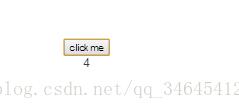
可以看见每点击一次绑定的值就增加1.也就是说可以吧js的操作放在事件触发的后面。但是有时候逻辑太复杂的时候写在里面就会造成混乱,视图和逻辑混淆。所以click后面可以接一个方法,把所有处理逻辑的方法封装在一个函数里面click的时候调用
2.事件处理方法
v-on:click="greet"
eg:
<template>
<div >
<input type="button" value="clickme" v-on:click="greet"/>
<div>{{res}}</div>
</div>
</template>
<script>
export default {
name: 'HelloWorld',
data () {
return {
name : 1,
res:""
}
},
methods:{
greet: function () {
// `this` 在方法里指向当前 Vue 实例
this.res='Hello ' + this.name + '!';
}
}
}
</script>
<!-- Add "scoped" attribute to limit CSS to this component only -->
<style scoped>
</style>
效果:

可以看见点击之后执行了greet方法里面js逻辑
3.带参数的时间绑定方法:
同上,唯一区别是携带了参数
v-on:click="greet(name)"
<template>
<div >
<input type="button" value="clickme" v-on:click="greet(name)"/>
<div>{{res}}</div>
</div>
</template>
<script>
export default {
name: 'HelloWorld',
data () {
return {
name : 1,
res:""
}
},
methods:{
greet: function (reccept) {
// `this` 在方法里指向当前 Vue 实例
this.res='Hello ' + reccept+1 + '!';
}
}
}
</script>
<!-- Add "scoped" attribute to limit CSS to this component only -->
<style scoped>
</style>
效果一致。对方法的调用同样可以一个方法多处多次的调用
4.内联处理器中的方法
也就是说在方法里面调用其他的方法,这里的其他方法可以是js原生的方法比如阻止冒泡呀等等,也可以是自定义的方法
v-on:click="greet(name,$event)"
eg:
<template>
<div >
<input type="button" value="clickme" v-on:click="greet(name,$event)"/>
<div>{{res}}</div>
</div>
</template>
<script>
export default {
name: 'HelloWorld',
data () {
return {
name : 1,
res:""
}
},
methods:{
greet: function (reccept,event) {
if (reccept===1) this.say()
},
say:function () {
this.res="我调用了"
}
}
}
</script>
<!-- Add "scoped" attribute to limit CSS to this component only -->
<style scoped>
</style>
效果:
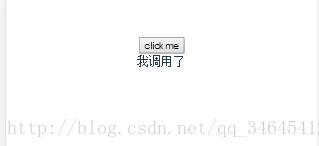
5.事件对象
$event 拿到当前点击事件的事件对象,比如click就是拿到当前点击的dom事件对象信息
v-on:click="greet($event)"
eg:
<template>
<div >
<input type="button" value="clickme" v-on:click="greet($event)"/>
</div>
</template>
<script>
export default {
name: 'HelloWorld',
data () {
return {
hide : true
}
},
methods:{
greet: function (ev) {
alert(ev.clientX)
}
}
}
</script>
<!-- Add "scoped" attribute to limit CSS to this component only -->
<style scoped>
</style>
效果:
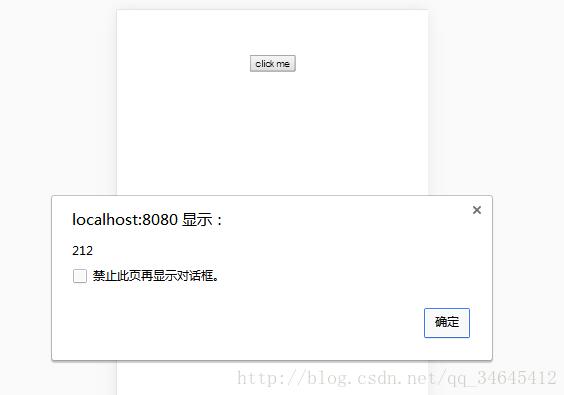
6.事件冒泡
当不阻止事件冒泡的时候会弹两次
eg
<template>
<div >
<div @click="show1($event)">
<div @click="show2($event)">点击我呀</div>
</div>
</div>
</template>
<script>
export default {
name: 'HelloWorld',
data () {
return {
hide : true
}
},
methods:{
show1: function (ev) {
alert(1)
},
show2: function (ev1) {
alert(2)
}
}
}
</script>
<!-- Add "scoped" attribute to limit CSS to this component only -->
<style scoped>
</style>
那么但阻止冒泡后就只会弹一次
eg:原生js阻止冒泡
ev1.cancelBubble=true
<template>
<div >
<div @click="show1($event)">
<div @click="show2($event)">点击我呀</div>
</div>
</div>
</template>
<script>
export default {
name: 'HelloWorld',
data () {
return {
hide : true
}
},
methods:{
show1: function (ev) {
alert(1)
},
show2: function (ev1) {
ev1.cancelBubble=true
alert(2)
}
}
}
</script>
<!-- Add "scoped" attribute to limit CSS to this component only -->
<style scoped>
</style>
那么vue自己封装的阻止冒泡方法呢?
@click.stop="show2()"
eg:
<template>
<div >
<div @click="show1()">
<div @click.stop="show2()">点击我呀</div>
</div>
</div>
</template>
<script>
export default {
name: 'HelloWorld',
data () {
return {
hide : true
}
},
methods:{
show1: function () {
alert(1)
},
show2: function (ev1) {
alert(2)
}
}
}
</script>
<!-- Add "scoped" attribute to limit CSS to this component only -->
<style scoped>
</style>
7.阻止默认行为:
比如:如下右键之后会将默认的菜单带出来
<template>
<div >
<div>
<div @contextmenu="show2()">右键点击我呀</div>
</div>
</div>
</template>
<script>
export default {
name: 'HelloWorld',
data () {
return {
hide : true
}
},
methods:{
show2: function (ev1) {
alert(2)
}
}
}
</script>
<!-- Add "scoped" attribute to limit CSS to this component only -->
<style scoped>
</style>
效果:
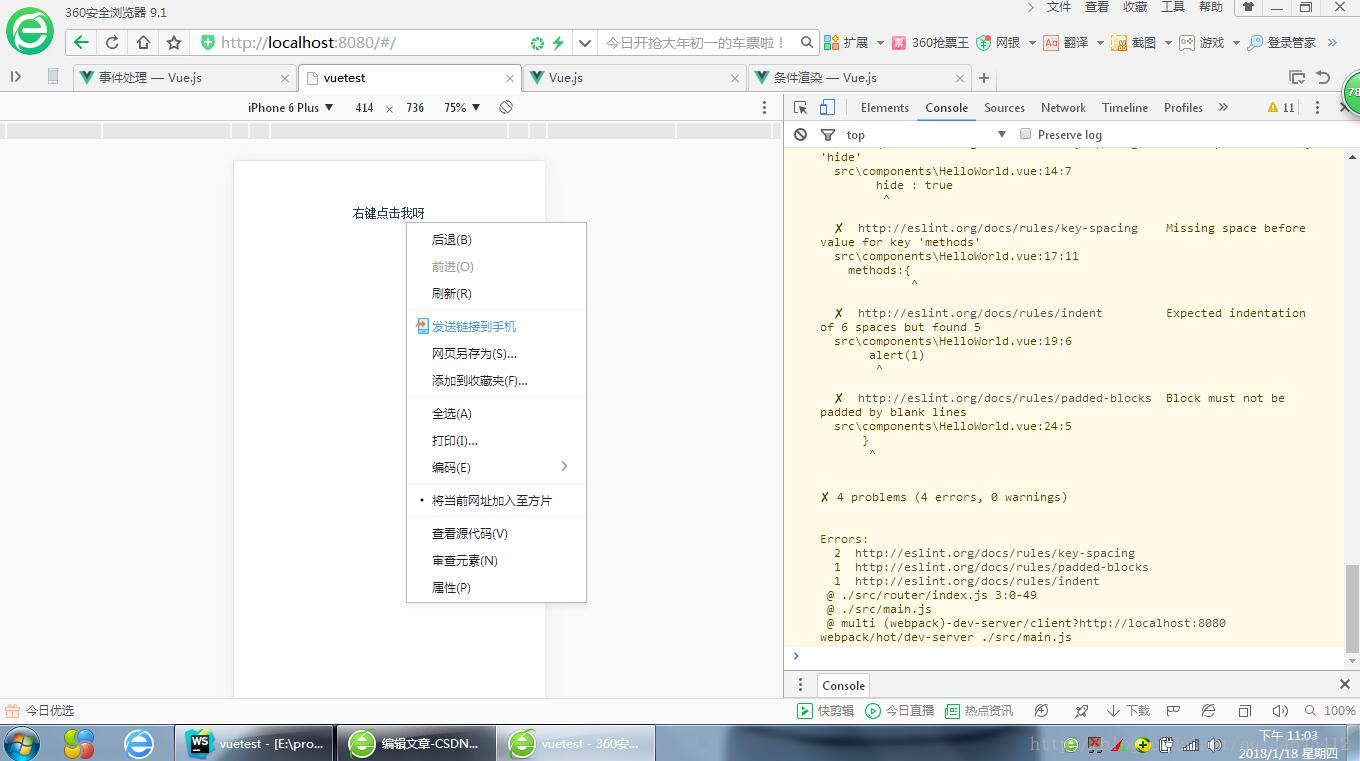
那么就有了阻止默认行为
ev1.preventDefault();
eg:
<template>
<div >
<div>
<div @contextmenu="show2($event)">右键点击我呀</div>
</div>
</div>
</template>
<script>
export default {
name: 'HelloWorld',
data () {
return {
hide : true
}
},
methods:{
show2: function (ev1) {
alert(2);
ev1.preventDefault();
}
}
}
</script>
<!-- Add "scoped" attribute to limit CSS to this component only -->
<style scoped>
</style>
点击后默认菜单将不会显示(PS早360浏览器右键无效)
vue里面的封装的阻止默认行为的方法:
@contextmenu.prevent="show2()"
eg:
<template>
<div >
<div>
<div @contextmenu.prevent="show2()">右键点击我呀</div>
</div>
</div>
</template>
<script>
export default {
name: 'HelloWorld',
data () {
return {
hide : true
}
},
methods:{
show2: function (ev1) {
alert(2);
}
}
}
</script>
<!-- Add "scoped" attribute to limit CSS to this component only -->
<style scoped>
</style>
8.其他事件修饰符
用法都一样就不再赘述
.capture
.self
.once
<!-- 阻止单击事件继续传播 --> <a v-on:click.stop="doThis"></a> <!-- 提交事件不再重载页面 --> <form v-on:submit.prevent="onSubmit"></form> <!-- 修饰符可以串联 --> <a v-on:click.stop.prevent="doThat"></a> <!-- 只有修饰符 --> <form v-on:submit.prevent></form> <!-- 添加事件监听器时使用事件捕获模式 --> <!-- 即元素自身触发的事件先在此处处理,然后才交由内部元素进行处理 --> <div v-on:click.capture="doThis">...</div> <!-- 只当在 event.target 是当前元素自身时触发处理函数 --> <!-- 即事件不是从内部元素触发的 --> <div v-on:click.self="doThat">...</div>
使用修饰符时,顺序很重要;相应的代码会以同样的顺序产生。因此,用 @click.prevent.self 会阻止 所有的点击 ,而 @click.self.prevent 只会阻止对元素自身的点击。
2.1.4 新增
<!-- 点击事件将只会触发一次 --> <a v-on:click.once="doThis"></a>
不像其它只能对原生的 DOM 事件起作用的修饰符,.once 修饰符还能被用到自定义的组件事件上。如果你还没有阅读关于组件的文档,现在大可不必担心。
<!-- the scroll event will not cancel the default scroll behavior --> <div v-on:scroll.passive="onScroll">...</div>
Vue 为这些修饰符额外提供了 .passive 修饰符来提升移动端的性能。
举个例子,在滚动的时候,浏览器会在整个事件处理完毕之后再触发滚动,因为浏览器并不知道这个事件是否在其处理函数中被调用了 event.preventDefault()。.passive 修饰符用来进一步告诉浏览器这个事件的默认行为不会被取消。
不要把 .passive 和 .prevent 一起使用。被动处理函数无法阻止默认的事件行为。
以上为个人经验,希望能给大家一个参考,也希望大家多多支持NICE源码。如有错误或未考虑完全的地方,望不吝赐教。
